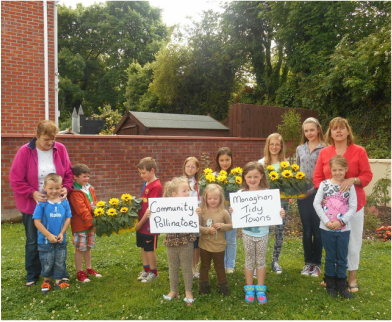Community PollinatorsWe promote plants and flowers that are good for pollination. So, apart from the development of the Dispersed Urban Orchard, we also promote the growing of fruits and flowers that promote pollination at different times of the year. In 2013, with the help of the Irish Wildlife Trust, we planted 15,000 bulbs around the town, mostly daffodils. We followed that with another 5000 last year. We plan to add 10000 tulips and alium this autumn.
For summer we intend to move more and more towards perennials in flower beds with annuals in baskets and boxes. Here are some useful web sites for more information... http://pollinators.biodiversityireland.ie/bees/irelands-bees/how-can-you-help/ http://www.sunset.com/garden/flowers-plants/plants-pollination http://www.foxleas.com/flower_shapes.htm http://gardening.about.com/od/attractingwildlife/a/Bee_Plants.htm https://www.rhs.org.uk/science/conservation-biodiversity/wildlife/encourage-wildlife-to-your-garden/plants-for-pollinators |
Tips for pollinators..
|
